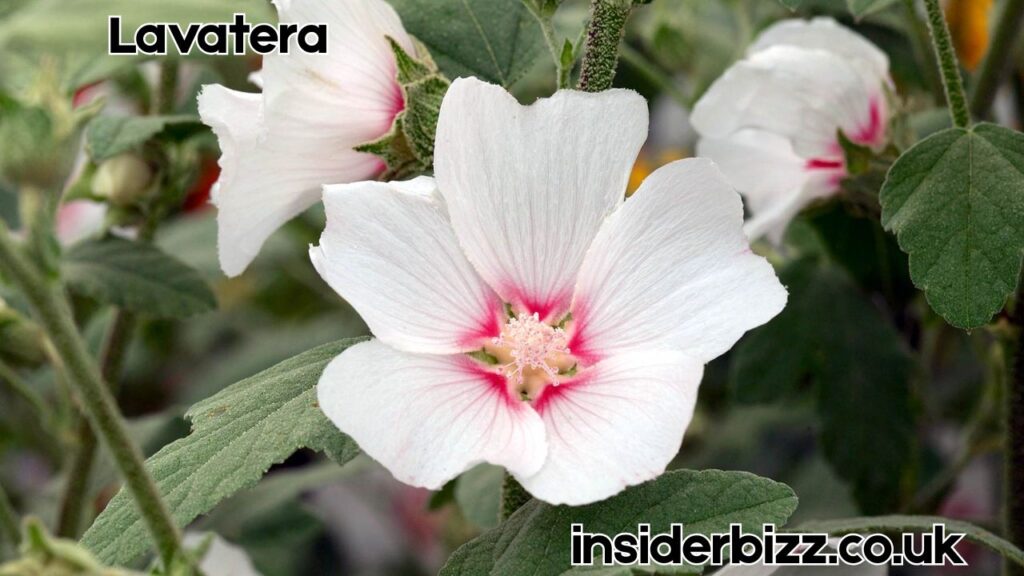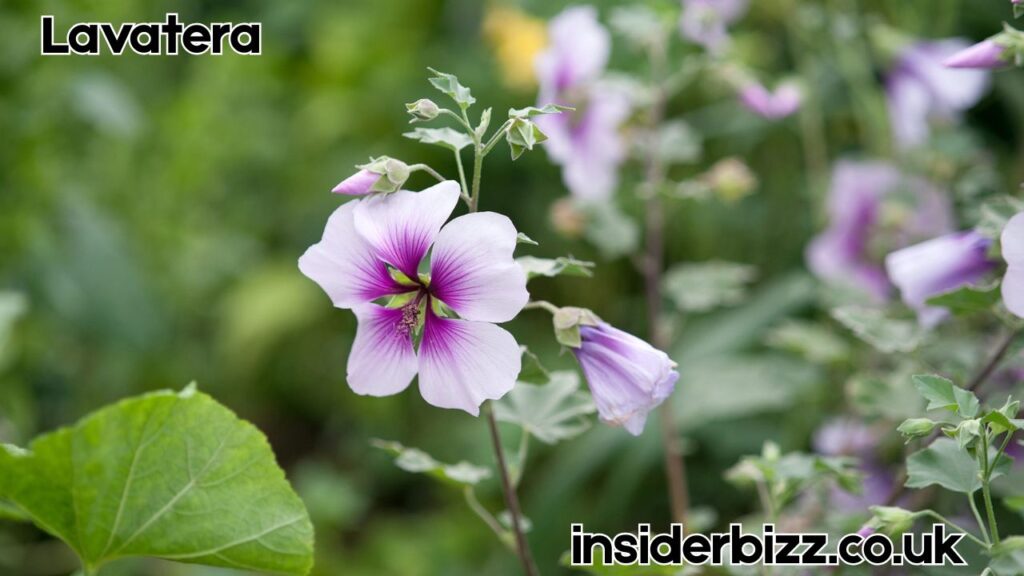
Lavatera: The Graceful Bloom of the Garden World
The Origins and Botanical Heritage of Lavatera
Lavatera, often referred to as tree mallow, is a flowering plant that graces gardens with its elegance, vibrancy, and ease of cultivation. The name Lavatera comes from the 17th-century Swiss naturalists, the Lavater brothers, who were honored through its botanical naming. Belonging to the Malvaceae family, Lavatera includes both annual and perennial species and thrives in a variety of climates across Europe, Asia, and parts of Africa.
This plant has long been favored for its striking, hibiscus-like flowers and fast-growing nature. Whether grown in flower beds, borders, or containers, Lavatera introduces a sense of liveliness and color to any outdoor space. Its adaptability and long blooming season make it a staple in ornamental gardening.
Visual Beauty and Characteristics of Lavatera

Lavatera is renowned for its large, funnel-shaped flowers that range in shades from soft pastels to rich magentas. The blooms are often veined and feature five symmetrical petals that attract pollinators such as bees and butterflies. This natural allure gives Lavatera a central role in biodiversity-supporting gardens.
The foliage of Lavatera is generally lobed and has a gentle texture that complements the vibrancy of its blossoms. Whether climbing as a shrub or growing upright as a bushy perennial, Lavatera commands attention with its airy grace. The sheer volume of blooms produced over the season makes Lavatera a breathtaking focal point.
Cultivation and Garden Use of Lavatera
Gardeners appreciate Lavatera not just for its beauty but also for its resilience and speed of growth. It prefers full sun and well-drained soil, though it tolerates a range of soil types. Lavatera can withstand dry conditions once established, making it a popular choice for low-maintenance or drought-tolerant landscapes.
In garden planning, Lavatera fits well into cottage garden styles, wildflower arrangements, and even urban flower beds where space is limited. The plant can be used as a standalone ornamental or interspersed among other summer bloomers to create layered visual interest. Lavatera is especially useful in softening hard edges of fences or walls with its billowing form.
Seasonal Interest and Bloom Cycle of Lavatera
One of the most beloved aspects of Lavatera is its extended flowering period. In most temperate climates, Lavatera begins to bloom in early summer and continues through to the first frost. This extended bloom season ensures continuous color when many other garden plants begin to fade.
Deadheading, or removing spent flowers, can further encourage Lavatera to continue producing new blooms. While some species are perennial and return each year, others are treated as annuals, offering quick results and seasonal delight. Regardless of the variety, Lavatera is always appreciated for the sense of movement and charm it brings to the garden.
Lavatera’s Role in Supporting Garden Ecology
Beyond aesthetics, Lavatera plays a valuable role in garden ecosystems. The abundant flowers attract bees, butterflies, and hoverflies, making Lavatera an excellent choice for pollinator-friendly planting schemes. Its open blooms allow easy access to nectar, encouraging repeat visits from beneficial insects.
By serving as a nectar source, Lavatera contributes to the health of local biodiversity. It supports the pollination of nearby vegetables, herbs, and fruits by increasing the presence of pollinators. In this way, Lavatera acts as both a visual centerpiece and an ecological asset in the garden.
Propagation and Care Techniques for Lavatera
Lavatera can be propagated by seeds or cuttings, depending on the gardener’s preference and the species being cultivated. Seeds should be sown in early spring under cover and transplanted after the last frost. For perennials, softwood cuttings taken in summer can be rooted and planted to expand the garden’s Lavatera presence.
While Lavatera is generally low-maintenance, a few basic care steps can ensure healthy growth. Water young plants regularly until established. Prune back after flowering to encourage bushier growth and maintain shape. In colder climates, mulch around the base of perennial Lavatera to protect the roots during winter months.
Common Varieties and Species of Lavatera
There are many species within the Lavatera genus, each offering different features suitable for diverse gardening needs. Lavatera trimestris, an annual variety, is known for its quick flowering and vibrant color range. Lavatera thuringiaca, a perennial species, provides reliable blooms year after year with a more shrubby form.
Hybrid cultivars such as Lavatera × clementii ‘Barnsley’ are especially popular for their soft pink flowers and long blooming seasons. Each type of Lavatera contributes something unique, making the plant versatile across regions, design themes, and maintenance preferences.

Companion Planting and Garden Design with Lavatera
Lavatera pairs beautifully with a range of other garden plants. Its loose, open structure makes it ideal for surrounding with compact perennials like lavender, salvia, or echinacea. Taller Lavatera varieties can create an impressive backdrop for shorter border plants or a transition between formal and wildflower sections.
Its color palette, ranging from white to pink to deep rose, complements many schemes, especially pastel or romantic gardens. Garden designers often use Lavatera to create a relaxed, breezy feel that evokes summer meadows and countryside charm. Because it grows quickly, Lavatera also fills gaps in newly established gardens.
Lavatera in Floral Arrangements and Aesthetic Uses
While Lavatera is most often appreciated in the ground, its blooms can also be used in floral arrangements. Though the flowers are delicate and short-lived when cut, they bring a soft, natural elegance to informal bouquets. The stems and leaves add fullness and height to wildflower-style compositions.
Beyond floral uses, Lavatera enhances the sensory experience of the garden through its subtle fragrance and calming visual appeal. It often becomes a favorite among visitors and gardeners alike for its effortless contribution to outdoor serenity.
Lavatera’s Place in Garden History and Future Potential
Throughout horticultural history, Lavatera has retained a place as a dependable and cherished garden flower. Though it may not always receive the spotlight of more exotic species, its consistent performance and charming presence keep it a top choice among both amateur and professional gardeners.
As interest in sustainable gardening and native planting grows, Lavatera is poised for renewed appreciation. Its ability to attract pollinators, thrive in variable conditions, and offer extended bloom times align with modern garden goals. Lavatera continues to evolve as new cultivars emerge, offering more color options and improved resilience.
Also Read : Exploring the Power of Prostavive Colibrim for Prostate Wellness



